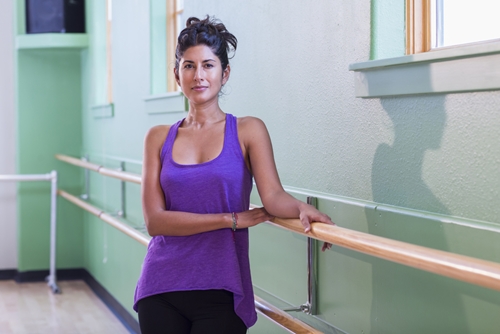When you’re looking for a position as a dance instructor, it’s important to have a polished, accurate dance teacher resume to send to studio owners. Chances are that your experience won’t fit perfectly into a typical resume template, so it can be a bit confusing to write the document in a way that makes sense. Here are a few strategies to put together a dance teacher resume that puts your best foot forward.
What to Include
Resumes generally have sections for education and work experience, but there are a number of other categories that you’ll probably want to include on yours. Here are the sections that your resume should include.
- Your contact information: At the top of the document, you should insert your name, address, phone number, email address and any other relevant contact information. Make sure that your email address is professional.
- Education: If you studied dance in college or have any other formal dance education, put this section toward the top of your resume.
- Dance training: Some teachers may not have studied dance in school, but have lots of dance training instead. In this case, you may want to put your education toward the bottom of your resume and include a section on dance training toward the top.
- Teaching experience: This is the equivalent section to job experience on a business resume. Here, you’ll want to list any experience you have instructing dancers, whether it’s at another studio, as part of a volunteer opportunity or as a teaching assistant.
- Performance Roles: Chasta Hamilton Calhoun of The Dance Exec says, “Certainly include relevant, recent performance information, particularly if it is at a professional level. I believe that all professional experience—performance, directorial, and choreographic is important to share. Listing experience shows how a dancer chooses to spend his/her time, and it also is indicative of responsibility, accountability, personal skill set, and time management.”
- Awards: If you’ve racked up some impressive achievements throughout your dance career, don’t be afraid to brag a little bit. You can include a brief section on awards and accomplishments if you have extra space.
- Memberships and affiliations: You may have relationships with teaching and/or dance organizations that would be beneficial to mention. Be sure to include them, since they underscore your dedication as a dance professional. If you are not a member of any such organizations, it may be worth checking them out. Many organizations offer educational experiences that could help you grow as an instructor.
Relatively inexperienced dance instructors might feel as though their resumes are a bit bare. If you want to add more information to your dance teacher resume, just be sure that it is relevant to the job you’re applying to. You may want to include a skills section where you list other ways you could contribute to the studio. This could include proficiency in a foreign language, experience with bookkeeping or even a CPR or first-aid certification.
Customize for the Job
A resume customized for the position you are seeking is a best practice in any industry. It’s also important to recognize that even among dance-related jobs, your approach should differ. For example, a resume geared towards a teaching position should not be exactly the same as those aimed at landing a performance role. Of the varying types, Calhoun says, “In many ways, the two are very similar; however, the difference lies in the fact that a dance job resume requires industrial-based standards, whereas a dance education resume should blend a more professional approach in its presentation. With any resume, it is important to customize it to the applicable job. As you accomplish more, you will have more to include, and it is important to highlight only the most important, applicable bullet points in order to be concise, representative, and competitive in the pool of applicants.”
General Tips and Tricks
Once you have the necessary information nicely formatted, go through and examine your dance teacher resume using general recommendations as your guide. Keep these suggestions in mind:
- Try to keep your dance teacher resume to one page when printed.
- Don’t overly embellish the design or layout – steer clear of pictures and fancy fonts.
- Don’t ever lie about or exaggerate your experience.
- Proofread your resume thoroughly, then have someone else do the same.
Consider an Online Resume
Creating a personal resume website is easier than ever, and is a great fit for showcasing your personality and expertise in a creative field. As Workfolio’s Charley Pooley says, “A website gives you creative freedom to express your personality in ways that are not possible through your resume.”
In addition to the standard information you’d include on a printed resume, going digital allows you to add videos and pictures that illustrate your teaching style and experience. If you go this route, make sure to obtain a video/image release from those who are included, or consider staging a class with those who have signed a release.
Not only are personal websites more visual that printed resumes, they are more visible as well. In a recent survey by Domain.me, more than 70 percent of job applicants believe that hiring managers review their online presence before making a hiring decision. Present the information that you want the world to see, and help make your first impression a good one!
Editor’s note: Additional content has been added to this article in order to provide readers with more in-depth resume advice.


